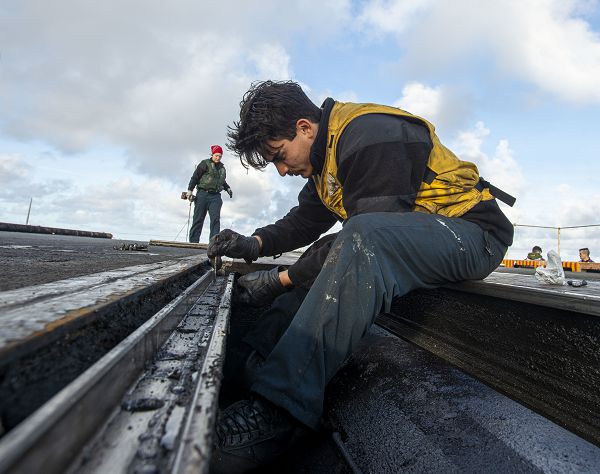
Pacific Ocean. (November 18, 2023): Since the 1950s, the Navy has used catapults to launch aircraft from extremely short distances. In the photo by Seaman Apprentice Joseph M. Paolucci , Aviation Boatswain's Mate (Equipment) 2nd Class Evan Valdes, from Surprise, Arizona, lubricates a catapult aboard the aircraft carrier USS Nimitz while underway in the Pacific.
The catapult is a slot built into the flight deck that is connected to a large piston below. The piston is attached to the nose gear of the aircraft using a wire rope, or bridle which runs along a track. Different means have been used to launch the catapult, from gun powder to air pressure, but nearly all carriers use steam power today. Steam systems, however, are massive, inefficient, and their extreme temperatures threaten crew safety.
The Navy is currently fielding an alternative to steam, an Electromagnetic Aircraft Launch System, on the USS Gerald R. Ford, America’s newest and most advanced aircraft carrier. Electromagnetic catapults eliminate the dangers of steam and the need for large boiler rooms aboard ships, freeing up vital space.
The history of these devices’ dates to 1904 when the Wright Brothers used a derrick style catapult to launch man’s earliest successful flights. The first person to catapult from a Navy vessel was Theodore Gordon Ellyson, nicknamed “Spuds,” who was launched from a stationary barge just before World War I.
His first attempt, however, nearly ended in disaster. As his plane left the deck with its nose up, a sudden crosswind threw him crashing into the sea. Luckily, Lieutenant Ellyson managed to escape unhurt. He remains the first Navy officer designated an “aviator” in U.S. history.
The pilots of tomorrow may be sent aloft by new means, but their skill and bravery remain the same.


